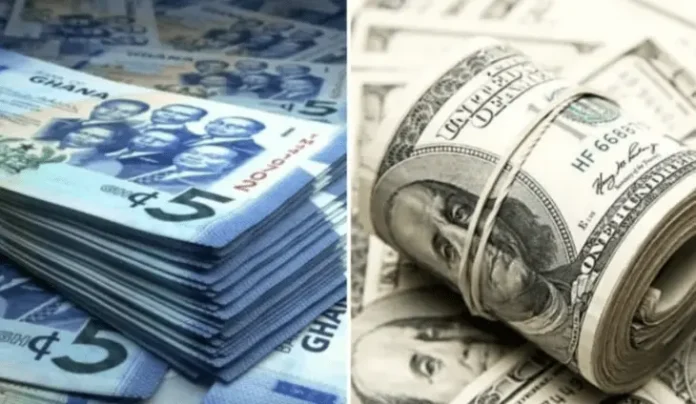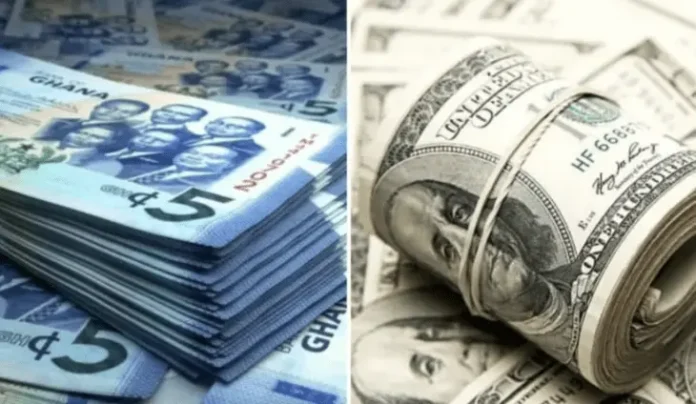
Ghana’s cedi is gaining stronger anchoring mechanisms as the Bank of Ghana launches a $1.15 billion foreign exchange intervention programme this month, combining monetary policy easing with structured currency market support to reduce volatility.
The central bank commenced foreign exchange intermediation under its Domestic Gold Purchase Programme in October, selling dollars through twice weekly price competitive auctions open to all licensed banks. The initiative aims to deepen the interbank foreign exchange market while improving price discovery mechanisms that should smooth sharp currency swings.
Under the programme structure, BoG purchases gold from domestic miners, converts it into dollars, and sells those dollars to commercial banks through transparent auction processes. This approach ensures banks have sufficient foreign currency to meet demand from importers and businesses, potentially reducing pressure on the cedi while limiting parallel market activity.
The timing appears strategic. With gold prices surging beyond $2,600 per ounce in recent months, the programme generates substantially more foreign currency from the same volume of domestic gold purchases. This price advantage strengthens BoG’s international reserves while providing more firepower for currency market interventions.
The International Monetary Fund noted during its fifth review of Ghana’s Extended Credit Facility programme that the country has consistently exceeded targets for international reserves accumulation. This performance reflects improving macroeconomic fundamentals that underpin currency stability beyond just intervention programmes.
Ghana’s strong gold and cocoa export performance continues supporting the current account position. The combination of commodity export revenues and structured foreign exchange management creates multiple reinforcing mechanisms for currency stability rather than relying on single policy interventions.
The IMF highlighted that monetary policy easing, including a cumulative 650 basis point cut in the policy rate to 21.5 percent, reflects falling inflation and improving macroeconomic conditions. The central bank’s September decision to cut rates by 200 basis points came after inflation declined to 11.5 percent in August, the lowest reading in four years.
The cedi appreciated earlier this year as macroeconomic stabilization took hold, investor confidence improved, and inflation continued its sustained decline. However, currency markets remain sensitive to global financial conditions and domestic political developments, meaning interventions provide stability mechanisms rather than guarantees.
Market participants have welcomed the transparent auction approach, which contrasts with previous ad hoc intervention methods. The predictable twice weekly auctions allow banks and businesses to plan foreign exchange needs more effectively, potentially reducing speculative behavior that amplifies currency volatility.
The programme’s success depends partly on consistent implementation. Previous foreign exchange intervention initiatives in Ghana sometimes faltered when government priorities shifted or funding became inconsistent. The gold purchase mechanism provides a more sustainable funding source compared to interventions that drain reserves without replacement mechanisms.
Licensed banks participating in the auctions must compete on price, ensuring market forces still influence exchange rate determination within the structured intervention framework. This balance aims to provide stability without completely suppressing price signals that reflect underlying supply and demand conditions.
Critics might question whether $1.15 billion in monthly interventions can sustainably anchor the cedi given Ghana’s substantial import requirements. However, the programme supplements rather than replaces other foreign exchange sources including remittances, export earnings, and foreign direct investment.
The initiative faces implementation challenges including ensuring transparent auction processes, preventing manipulation by larger banks with more bidding capacity, and maintaining consistent gold supply from domestic miners. Small and medium banks have raised concerns about access to foreign exchange in previous intervention programmes.
Ghana’s cocoa sector contributes significantly to foreign exchange earnings, though production challenges and global price volatility create uncertainty. The diversification provided by gold exports through the purchase programme reduces dependence on any single commodity for foreign exchange generation.
The IMF’s positive assessment of Ghana’s reserve accumulation performance suggests the underlying macroeconomic framework supports the intervention programme. Strong reserves provide credibility to central bank interventions, making them more effective in influencing market expectations and behavior.
Looking ahead to 2026, sustained currency stability will depend on maintaining fiscal discipline, continuing inflation reduction, and preserving investor confidence through consistent policy implementation. The gold purchase programme provides tools for managing short term volatility, but longer term stability requires addressing structural economic challenges.
The combination of improved macroeconomic fundamentals, structured intervention mechanisms, and strong export performance creates a more favorable environment for cedi stability than existed during previous periods of currency pressure. Whether this translates into sustained exchange rate predictability will become clearer as the programme matures through multiple economic cycles.
